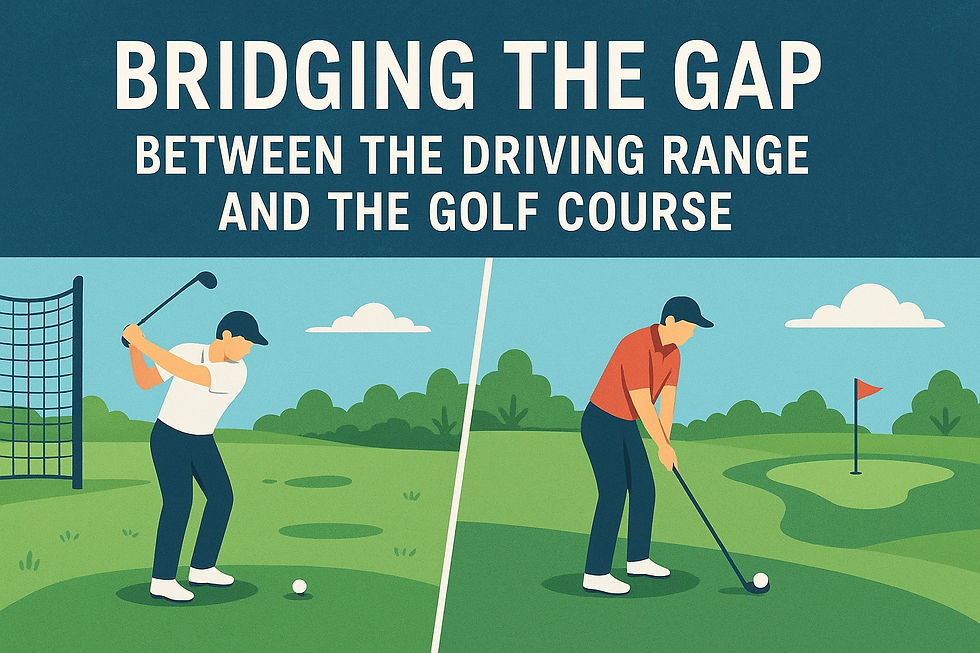Why You Chunk or Blade Your Wedges—and How to Fix It
- Eric J. Mac Donald

- Jun 15
- 2 min read

If you’ve ever stood over a wedge shot just yards from the green and ended up chunking it short—or worse, blading it across the green—you’re not alone. These frustrating misses are common even for seasoned golfers. The good news? They’re usually caused by a few identifiable and fixable mistakes.
1. Poor Setup and Ball Position
Many golfers set up wedges the same way they do with a 7-iron or hybrid. But wedges demand precision.
Fix: Narrow your stance, shift a bit more weight forward (around 60% on your lead leg), and play the ball slightly back of center. This promotes a downward strike that ensures clean contact and turf interaction.
2. Inconsistent Low Point
The low point of your swing—the moment your club is lowest relative to the ground—needs to occur after the ball. Many chunked or bladed shots happen when that low point is either too early or too late.
Fix: Focus on controlling your low point by maintaining your posture throughout the swing and feeling like your chest stays over the ball. Practice brushing the grass in front of a tee or line on the ground.
3. Excessive Wrist Action
Wristy swings are a recipe for inconsistent contact. Excessive hinge or flip at the bottom can lead to both fats and thins.
Fix: Focus on a quieter, more controlled swing where your chest and arms move together. Use drills like the “lead-hand only” wedge drill to feel proper extension and control through impact.
4. Trying to Help the Ball Up
Wedges are designed to get the ball in the air. When you try to lift the ball yourself, you tend to fall back and scoop it, increasing the chances of thin or fat shots.
Fix: Trust the loft of the club. Keep your hands ahead of the ball at impact and make a descending strike. A “clip the grass” sound is what you’re after—not a thud or a skip.
5. Not Practicing Short Game Enough
Let’s be honest—most golfers spend time hitting drivers on the range and neglect wedge play. Mastering the scoring clubs takes focused practice.
Fix: Set aside at least 30% of your practice time for wedges. Use different lies, distances, and targets. Simulate on-course situations to make practice more productive.
Final Thought
Clean, consistent wedge contact is within reach for any golfer. By addressing setup, low-point control, and mechanics, and dedicating more time to short-game practice, you can dramatically improve your scoring opportunities.













.jpg)



Comments